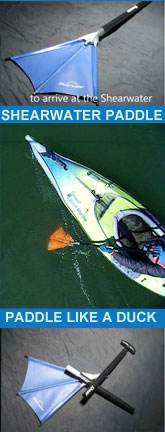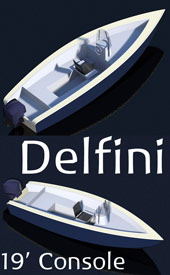|
I'm putting together a yawl sailing canoe. I've chosen a Grumman 17 as the canoe, but that could change. Currently I'm building outriggers and struts. The outriggers are 48 x 8 x 10 inches and will have two struts, kerf cut to provide some angle off the water. I'm basically following the Solway outrigger design. I'm using a high density foam panel of insulation 2 x 4 8 x 96 inches you can purchase at Home Depot. From the foam I cut 8 panels 10 inches wide by 48 inches long, these are glued together to form a rectangular box.
 Shows blocks glued/strong back epoxied in place and lines for cutting bow shape (used 3.5 gal bucket lid). Shows blocks glued/strong back epoxied in place and lines for cutting bow shape (used 3.5 gal bucket lid).
|
I also fitted a "T" shaped strong back which is what I mounted the "L" angle brackets to secure the four 5/16" stainless studs. These are located about 11.5" from each end.
 Shows strong back and cut foam for fitting. Shows strong back and cut foam for fitting.
|
 Shows the strong back 1/2" oak board cut to 3" with L brackets/bolt/locknut, fender washer low profile nut on top. Top view of outrigger strong back with studs installed. Shows the strong back 1/2" oak board cut to 3" with L brackets/bolt/locknut, fender washer low profile nut on top. Top view of outrigger strong back with studs installed.
|
 Slow process cutting and sanding. Slow process cutting and sanding.
|
 I used lines for guides when cutting/sanding. I used lines for guides when cutting/sanding.
|
 Note second outrigger not cut/sanded in back ground. Note second outrigger not cut/sanded in back ground.
|
 Using four sections of foam allows keeping things on center, even though the studs are off center. We're done with shaping/sanding. I used spackle for filling goofs. Started with 80 grit, then 220, 120 and 400 grit to finish. Using four sections of foam allows keeping things on center, even though the studs are off center. We're done with shaping/sanding. I used spackle for filling goofs. Started with 80 grit, then 220, 120 and 400 grit to finish.
|
 These are not perfect, but once glassed and mounted to the 10' struts, it will be difficult to see any differences. at least that's my thinking. These are not perfect, but once glassed and mounted to the 10' struts, it will be difficult to see any differences. at least that's my thinking.
|
Next step is to glass them with 6oz Eglass cloth, four layers on the bottom/sides and two layers on the deck/edges. Once these are glassed, cured and sanded, I'll paint them.
For anyone interested, Song of the Paddle forum of the UK and Yahoo Sailing Canoes group here are good sites for information/help. The main issue with sailing canoes is finding all the information. A very valuable book, "Canoe Rig The Essence and the Art" by Todd E. Bradshaw is very good, great diagrams and simple explanations. Balogh is a quality company producing sails and other sailing canoe/kayak components, but he's very expensive. Solway is only available in the UK, so shipping is high, too high. I priced purchasing a new canoe and Balogh sailing components and quickly surpassed the $5,000 mark. Trying to put together a clamp-on system, although possible, is very difficult. The difficulty isn't so much in the build, it's mounting it to the canoe securely enough. Royalex and other composite canoes are not specifically designed for sailing, so the hulls are somewhat flexible. Fine for paddling. Aluminum canoes are stiff and easy to drill/mount things. Since every sailing canoe is somewhat different, some experimentation is required.
It's easy enough to guesstimate the location of the mast(s) by using Bradshaws formula for CR/CE, then the leeboards can be located accordingly. Hull shape and weight distribution will also come into play, so some experimenting is needed to "fine tune" everything. We're not talking racing level performance, but with 40 to 60 square footage of canvas, if there's any wind, the canoe will move. I like the yawl rig for it's low aspect, a split rig also looks nicer to me. But a simple lug, single leeboard and rudder will do the trick. One of the most difficult aspect of a sailing canoe project is the rudder. I got lucky and purchased a Grumman sailing rig with rudder. The gudgeon is one piece and fits the curvature of the stern, is held in place with a single pin. You guys sell gudgeons which will work equally well, the double gudgeon system is very good. The hull may need reinforcing if you have a plastic boat, but it's easy enough to do. I opted for a push-pull tiller, but a continuous steering line is also very effective. In fact, I have a steering yoke/thwart which essentially extends the rudder yoke inboard, and a single central mounted tiller could be used. Not very practical on a narrow beam craft such as a canoe.
More to come...
|





 Shows blocks glued/strong back epoxied in place and lines for cutting bow shape (used 3.5 gal bucket lid).
Shows blocks glued/strong back epoxied in place and lines for cutting bow shape (used 3.5 gal bucket lid). Shows strong back and cut foam for fitting.
Shows strong back and cut foam for fitting. Shows the strong back 1/2" oak board cut to 3" with L brackets/bolt/locknut, fender washer low profile nut on top. Top view of outrigger strong back with studs installed.
Shows the strong back 1/2" oak board cut to 3" with L brackets/bolt/locknut, fender washer low profile nut on top. Top view of outrigger strong back with studs installed. Slow process cutting and sanding.
Slow process cutting and sanding. I used lines for guides when cutting/sanding.
I used lines for guides when cutting/sanding.
 Note second outrigger not cut/sanded in back ground.
Note second outrigger not cut/sanded in back ground. Using four sections of foam allows keeping things on center, even though the studs are off center. We're done with shaping/sanding. I used spackle for filling goofs. Started with 80 grit, then 220, 120 and 400 grit to finish.
Using four sections of foam allows keeping things on center, even though the studs are off center. We're done with shaping/sanding. I used spackle for filling goofs. Started with 80 grit, then 220, 120 and 400 grit to finish.
 These are not perfect, but once glassed and mounted to the 10' struts, it will be difficult to see any differences. at least that's my thinking.
These are not perfect, but once glassed and mounted to the 10' struts, it will be difficult to see any differences. at least that's my thinking.
